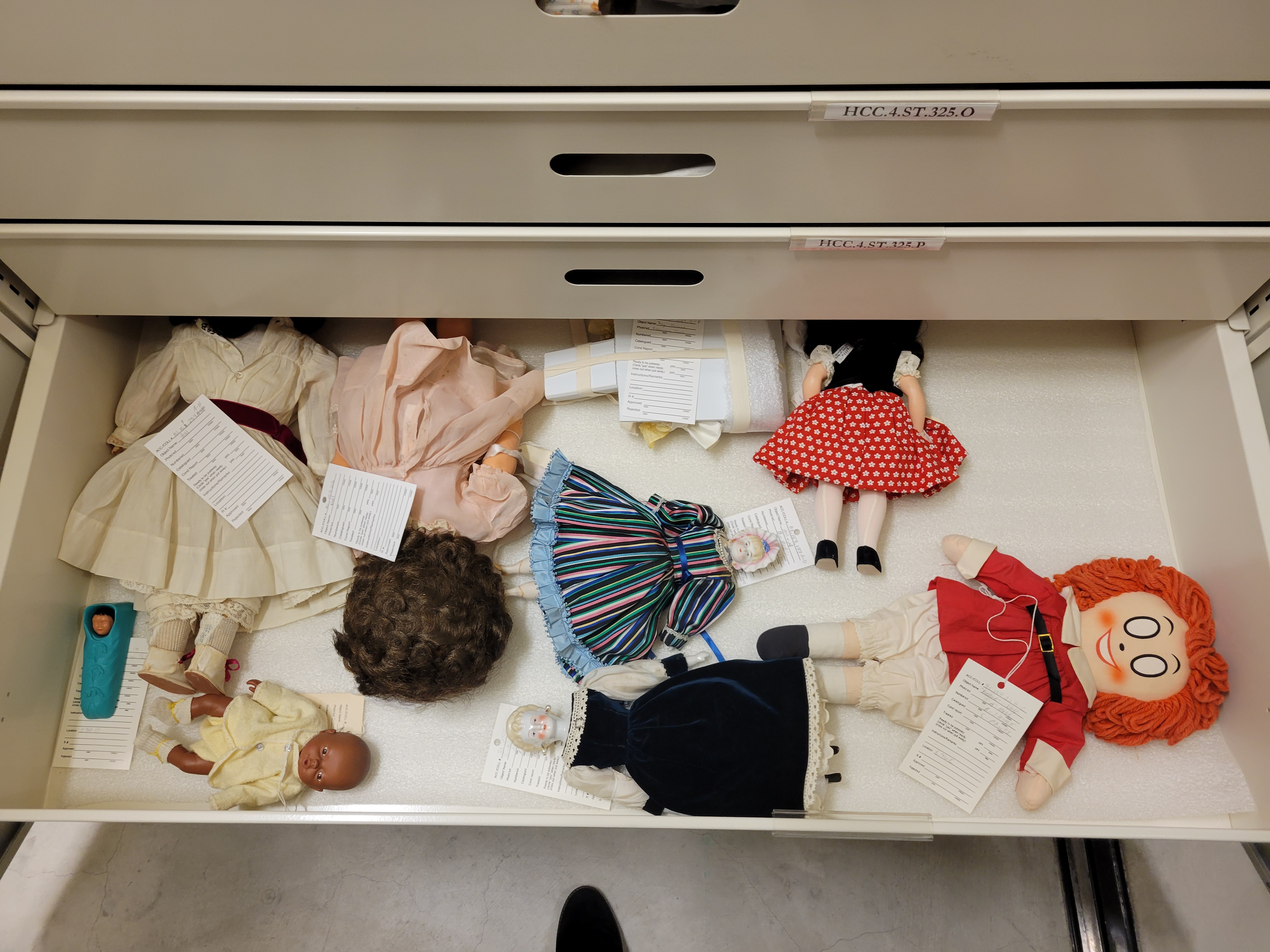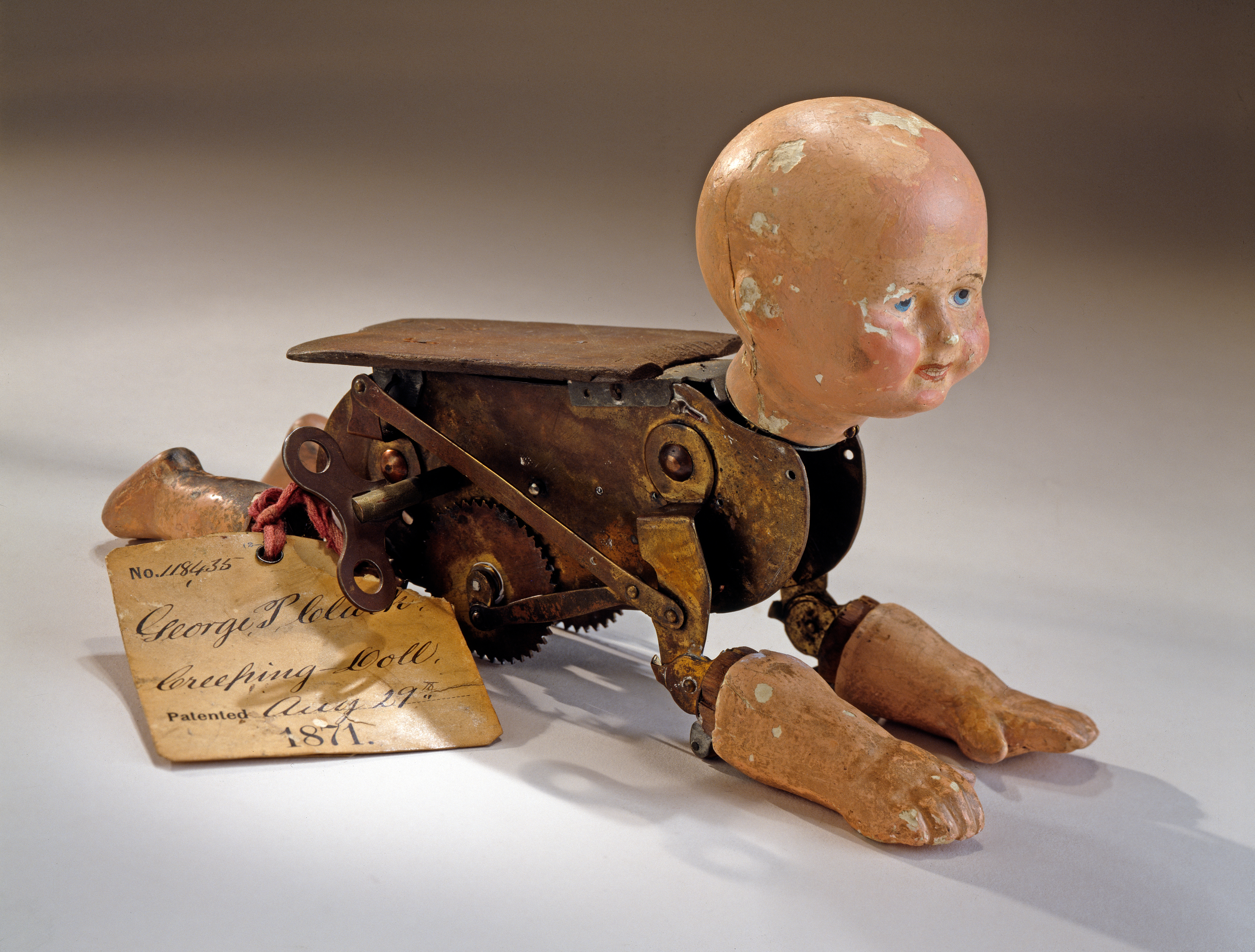
Story
Dolls: Precious or Creepy?
(Maybe both!)
This collection is a particular highlight in our Behind-the-Scenes museum tours; we open up the moveable storage to our visible doll collection stored on shelves and in drawers, and the first thing out of people’s mouths: “Creepy!”...often accompanied by shivers and a pervasive feeling of the willies.
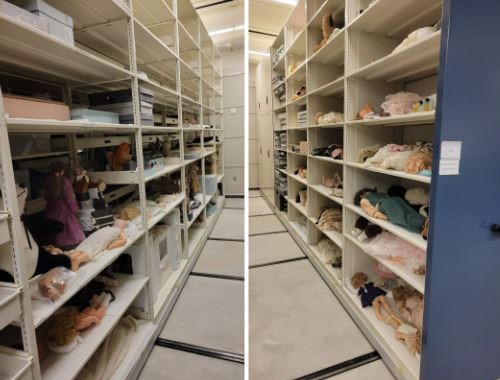
History Colorado’s visible doll storage within the Collection Storage area at the Center.
History Colorado is blessed with an extensive doll collection, thanks in large part to Bernice Lang who donated over 1700 dolls in 1988. As you’ll see in the photos here, many of our dolls are stored facedown. This is actually a preventative conservation technique. Many of the dolls have blinking eyes; the weight and attached mechanism to the eyes, that keep them open when posed upright, become fragile over time. Gravity will pull on the weight which will then break any of the attachments and even destroy the eyes. We like to make gravity work with us (and the dolls), and the best way to do that is to store the dolls’ faces on a foam ring (we like to use backing rod), facedown.
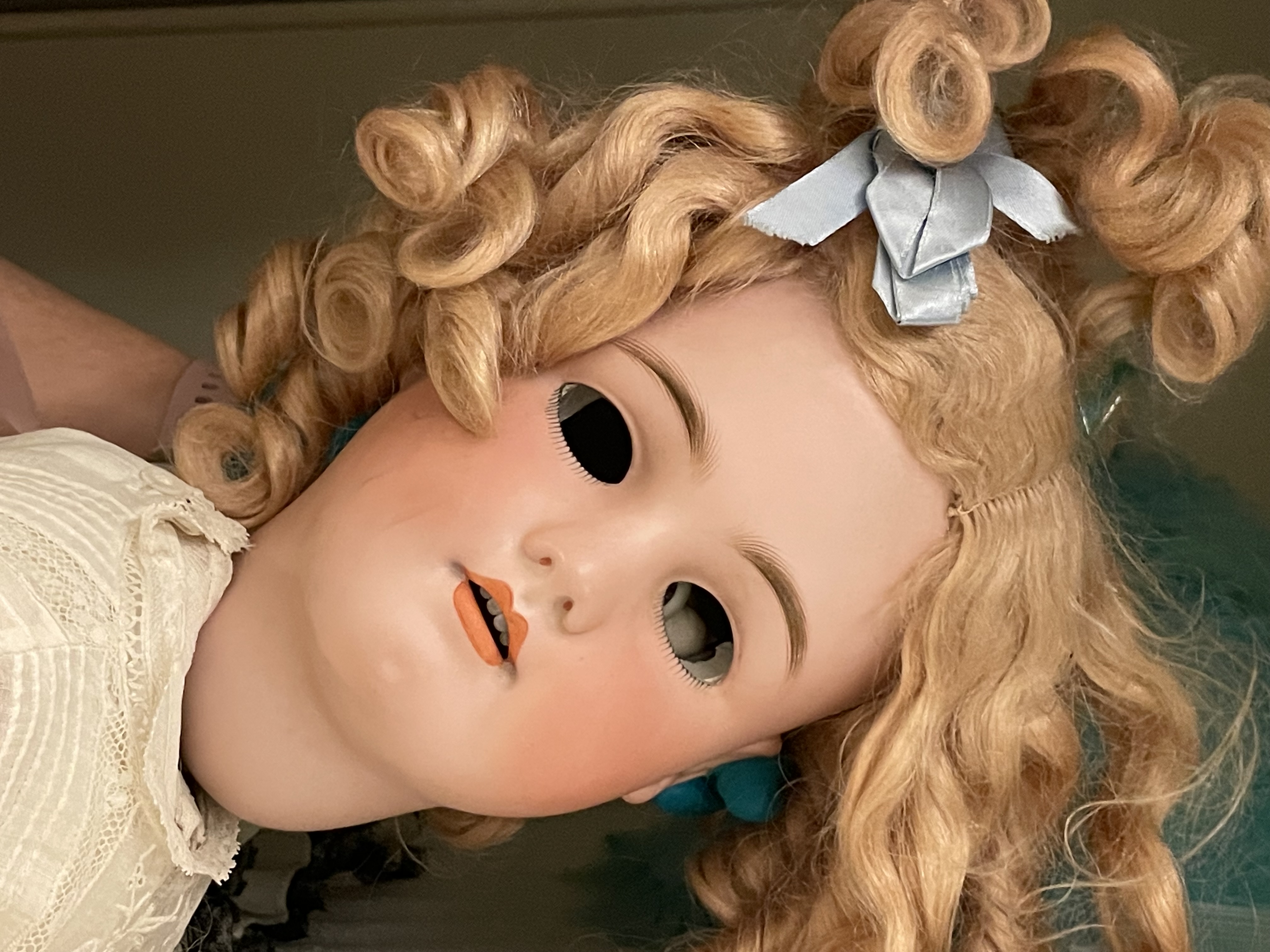
Simon & Halbig doll, 1876-1902, bequeathed by Bernice Lang. This doll is stored facedown, even with the broken eyes.
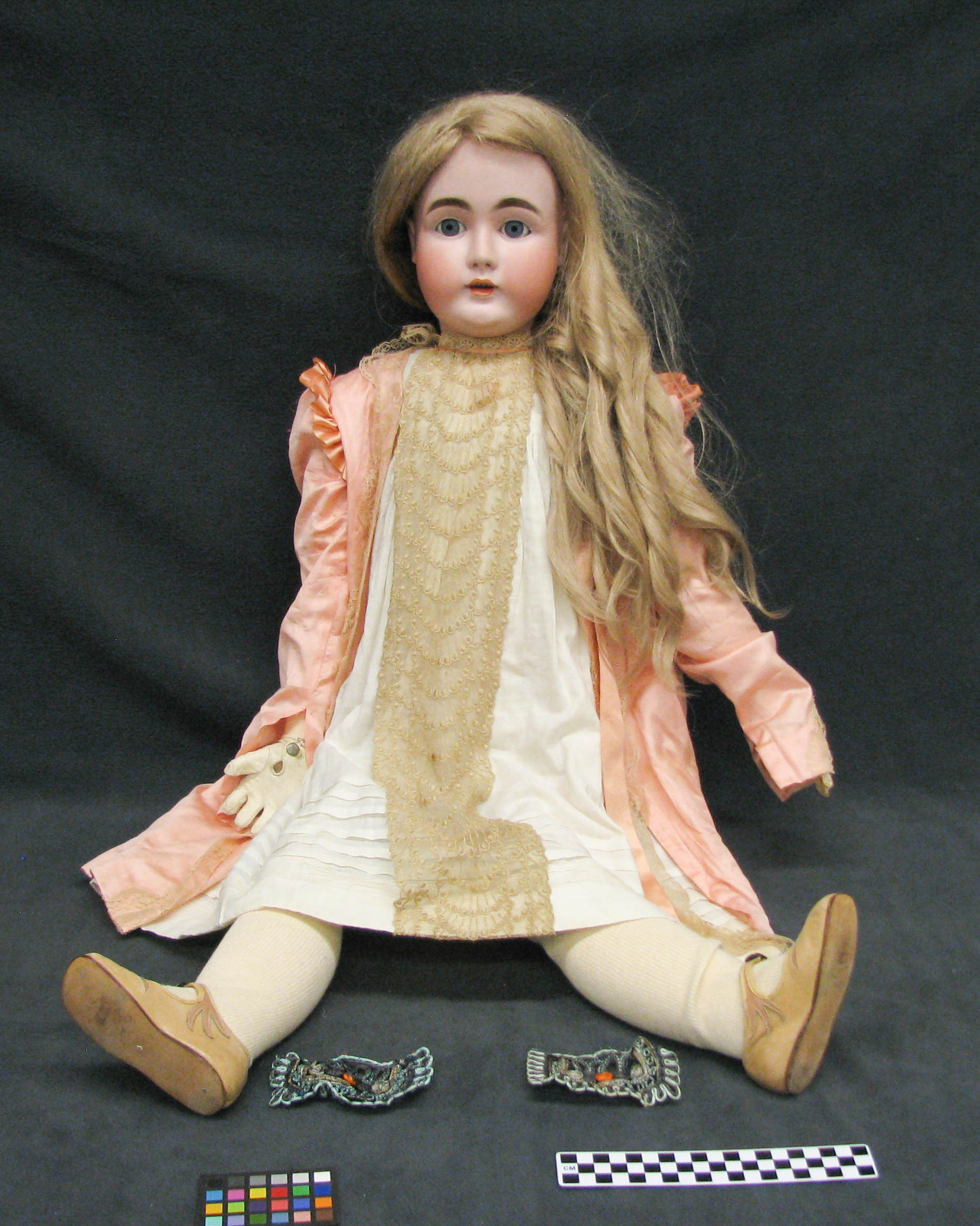
J.D. Kestner doll with a human hair wig, 1894–1920.
Other reasons dolls might be stored upside down? Their hair! If the hair is an attached wig made of human hair, we want to prevent breakage of those precious strands and keep our dolls as intact as possible. Since human or animal hair (typically horsehair—although that is more often used to stuff dolls) is an organic material, it is more sensitive to agents of deterioration and the best way to prevent hair breakage is to store the doll with the wig free from the weight of the doll’s head. (Talk about creepy! There are few things more disarming than a doll with “trimmed” hair.)
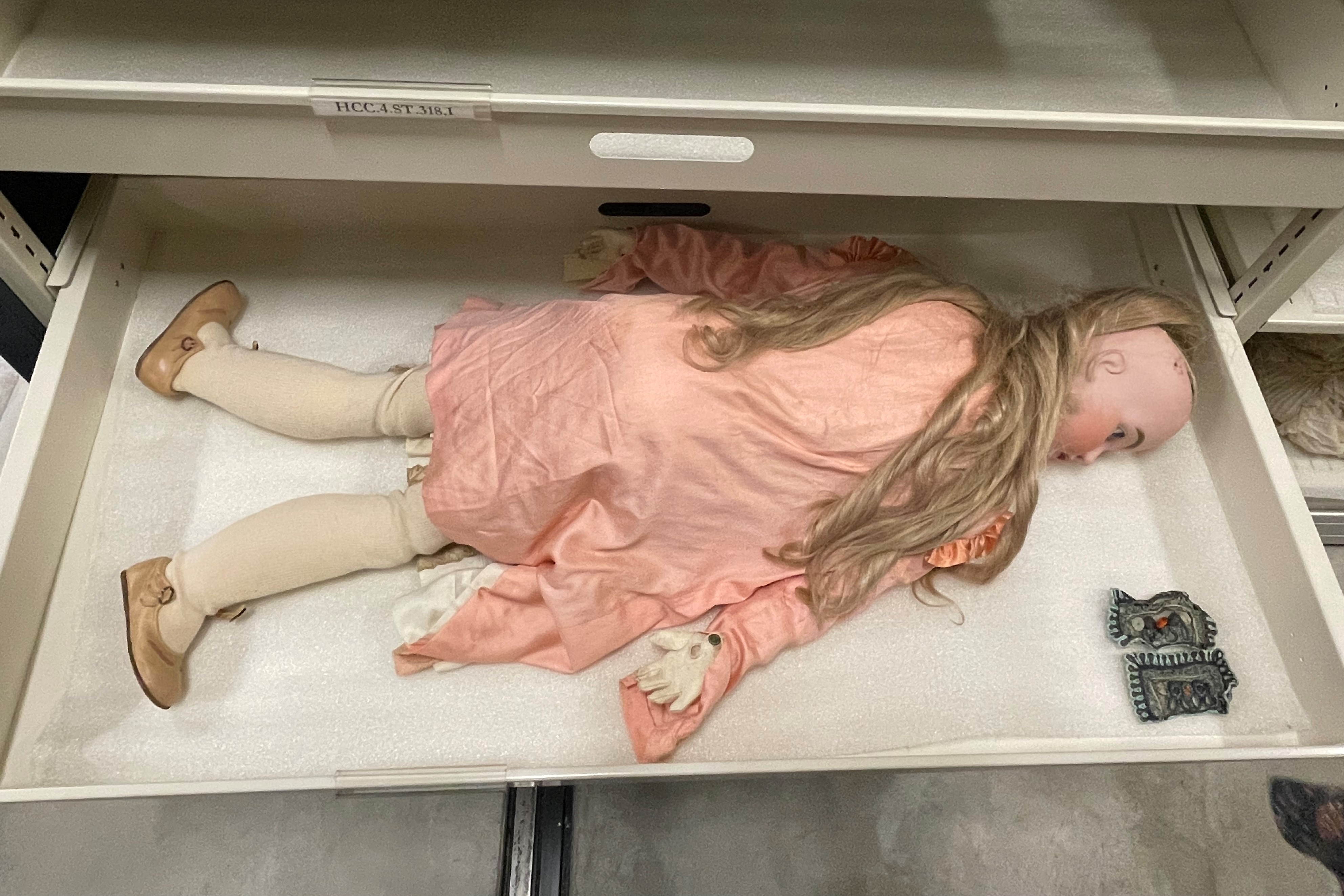
The same J.D. Kestner doll, lying in storage. You can see that the wig has already detached moderately from the head.
Of course, even though many of us are used to our dolls, sometimes our coworkers like to keep us on our toes!
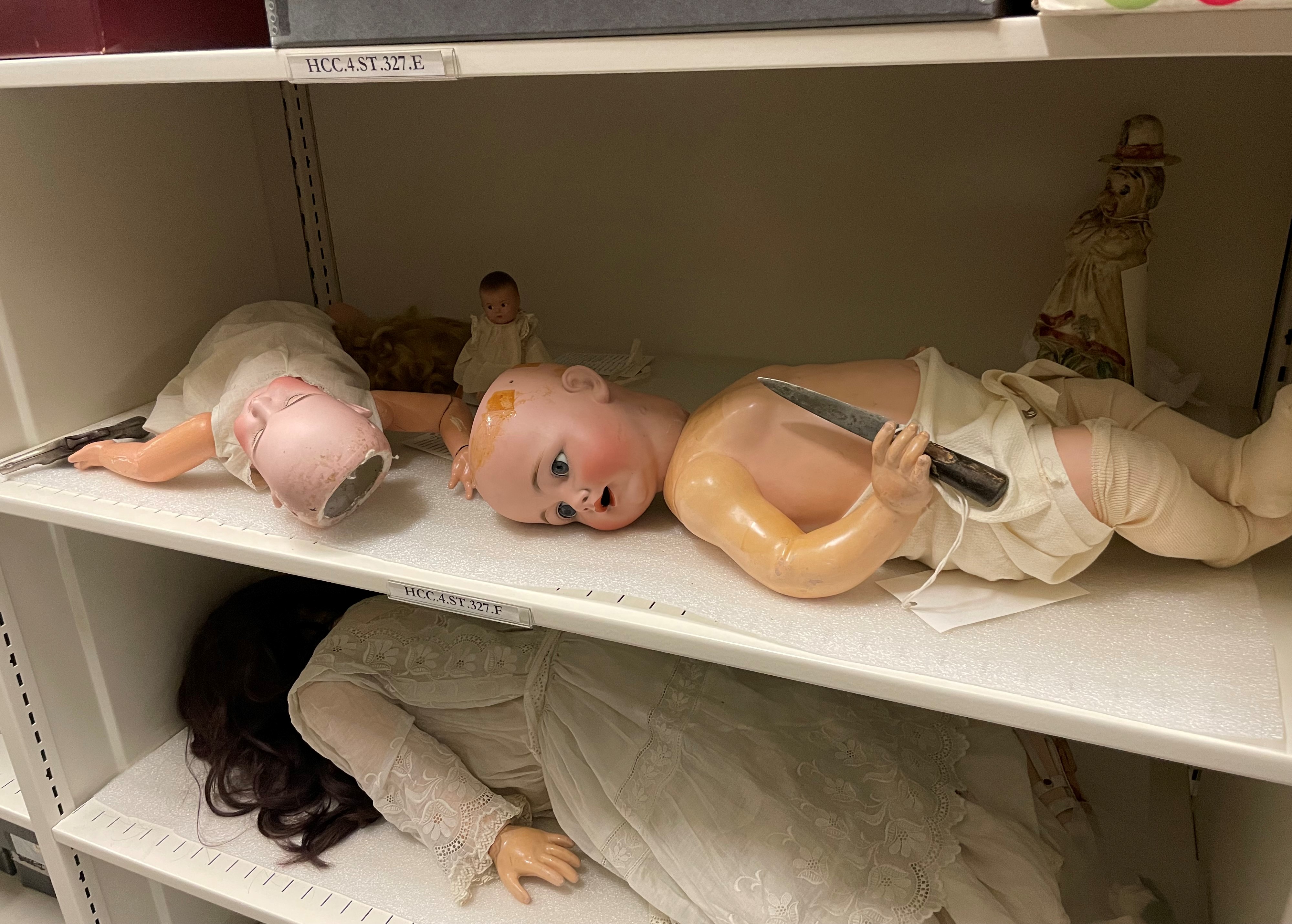
Dolls posed with small weapons from the History Colorado Collection. Thanks, James.
So, what do you think? Dolls are precious toys or creepy avatars?
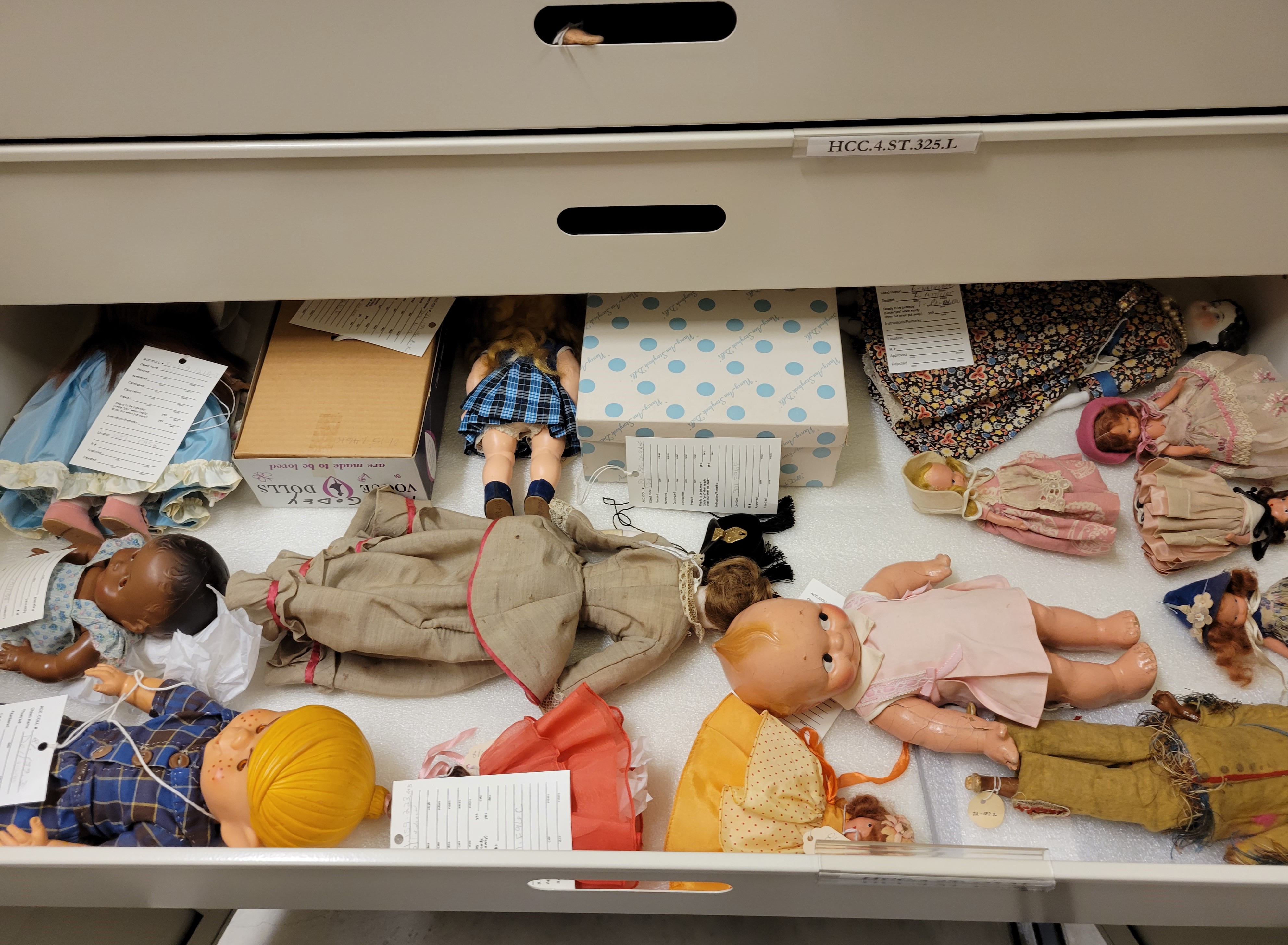
Additional dolls in storage drawers dating from the mid-nineteenth century to the late twentieth century.
As an extra bonus, you can search the Bernice Lang doll collection online! Go to h-CO.org/collections and search “Bernice Lang.” Here’s a preview of what you might find:
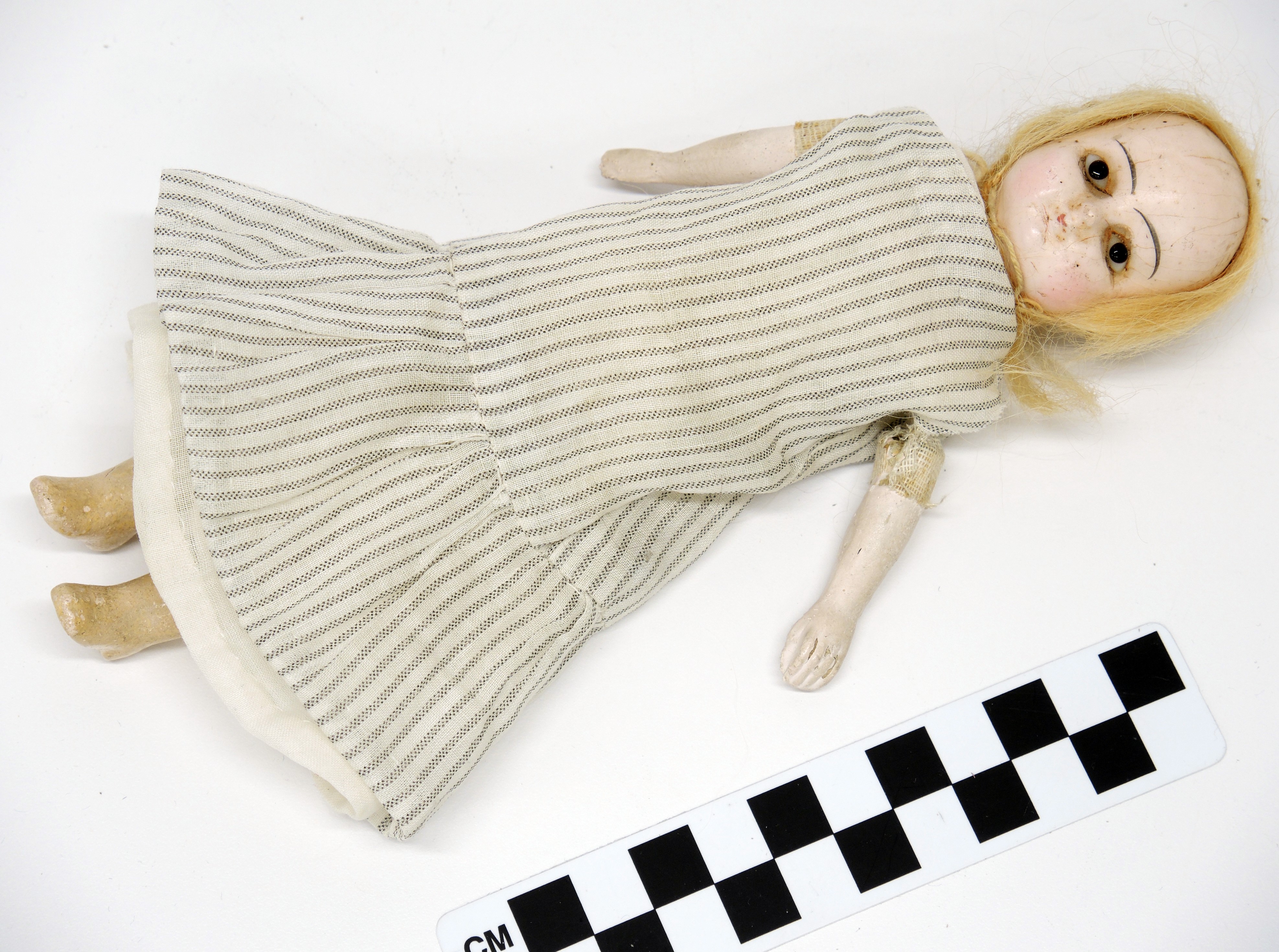
Papier-mâché and wax doll, 1860–1890. Those bloodshot eyes really do me in.
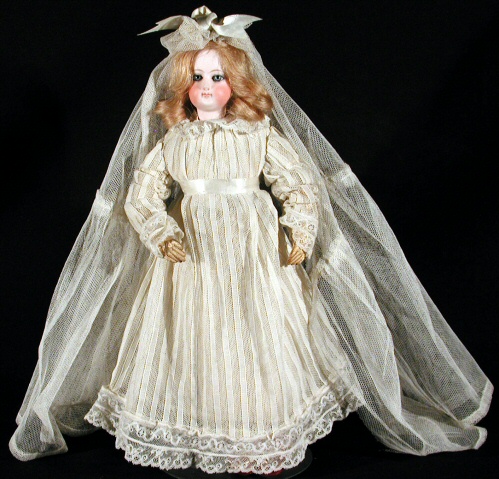
Guatier & Fils French fashion doll, 1860–1882. Miss Havisham, much?
Curious about other creepy dolls in other museums? Check out this doll patent model at the Smithsonian— it crawls on its own!

